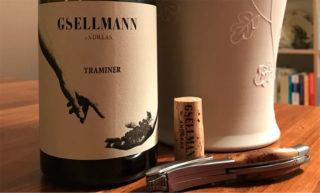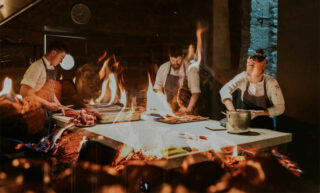Good Breeding
Austrian wine lovers all know Zweigelt, the quintessential Austrian red wine and the foundation grape of the Neusiedlersee DAC. Undemanding, Zweigelt wines can range from young, fruit-rich daily quaffs to complex, barrique-matured regional specialties. The eternal Austria grape... except that Zweigelt didn’t exist before 1922. It’s the greatest success so far of the Weinbauschule (School for Viticulture) in Klosterneuburg, just outside Vienna.
Established in 1860 on the grounds of Stift Klosterneuburg and its famed vineyards, the Höhere Bundeslehranstalt und Bundesamt für Wein- und Obstbau is one of the oldest schools of its kind. Training some 30 vintners per year, the Weinbauschule also pio- neers breeding new varieties that enrich the palate and are more resistant to diseases. With the shift from bulk to quality, improving yield isn’t a goal anymore.
One of their breeding program’s first successes was Rotburger, a hybrid of the indigenous grapes Blaufränkisch and St. Laurent. Its name a portmanteau of rot (red) and Klosterneuburg, it led an unexceptional life until vintners noticed that Rotburger survived the harsh winter of 1956 far better than other vines, marking the start of the grape’s popularity – eventually rebranded Zweigelt, in honor of Dr. Friedrich (or Fritz) Zweigelt, following a tradition of naming varieties after the school’s directors.
Winzer Krems
The search goes on
Since then, a string of new varieties has emerged from Klosterneuburg’s labs: Blauburger (one of the first Deckweine, used in cuvées as a coloring agent), Jubiläumsrebe (mostly used in sweet wines) and Goldburger – all still being planted and all from the time of Dr. Zweigelt in the 1920s. Later during the 1960s, Dr. Gertrude Mayer produced Ráthay and Roesler, the latter grown by the acclaimed Weingut Oggau in Burgenland for a truly remarkable top wine.
The current head of Hybrids and Breeding, Dr. Ferdinand Regner, has produced fungus-resistant varieties like Donauriesling and Donauveltliner. While still not widespread, Donauriesling is now grown in small amounts under his supervision by Winzer Krems, a cooperative of 1,000 small growers. With its aromatic nose, fruity palate and crisp acidity, it has made a good first impression.
One of their latest is pinot nova, which makes a deep red, medium to full-bodied wine despite its parents, elegant pinot noir and the white Malverina grape from Czechia. These new varieties are less susceptible to disease and require less pesticide, making wine production more sustainable.
“As opposed to the roman countries, Austrians have always been open to innovations”, Professor Regner explains Klosterneuburg’s success in breeding new grapes. “The AOC system in France, for instance, with its strict rules regarding the types of grapes one can use, has curbed the introduction of new varieties. Moreover, we involve the vintners into our programs. They test the new vines and give us feedback. Finally, our innovative attitude feeds on itself. Zweigelt is now an old variety and starts to develop diseases, something it seldomly had. It motivates us to find new varieties and improve existing ones.”
Altogether, Klosterneuburg maintains a stock of 1,200 new varieties in its 23-hectare vineyards, 30 of which show serious potential. The stream of new grapes has clearly not dried up. Expect more exciting new wines in the upcoming years.
Weinbaumschule Klosterneuburg
Wiener Strasse 74 – Klosterneuburg (Austria)
A slightly altered version of this article was published in Metropole – Vienna in English, July/August 2018 issue no. 29.





Comments